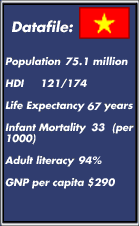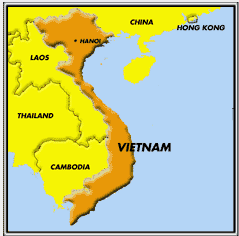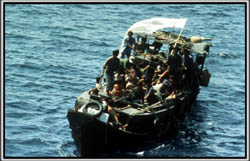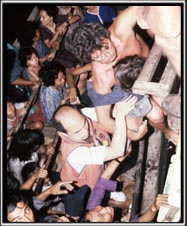
 Vietnam  The resettlement of the Vietnamese refugees, known as the 'boat people', is one of the largest in recent history.
The resettlement of the Vietnamese refugees, known as the 'boat people', is one of the largest in recent history.
The country we know today as Vietnam has had a complex and turbulent history. First China, then France, then, briefly, Japan occupied and controlled the country. By 1954 the country was divided into two for national elections in 1956, elections which never took place. The leader of the south declared himself president and war broke out between the south and the north. By 1961 the USA were worried that the Communist north would overwhelm the south. More and more USA troops moved into the area, with widespread bombing in the mid 60's. In 1975 the USA withdrew and Saigon (Ho Chi Minh City) finally fell. The Socialist Republic of Vietnam was recognised in 1976, and hundreds of thousands of fled from Vietnam ( plus Laos and Cambodia) many by small wooden boats across the South China Sea. This exodus continued for almost 20 years.
Boats became becalmed and were at the mercy of pirates, especially at night. They would board them, often killing the occupants and sinking the boats. Occasionally larger vessels would pick up refugees and take them to places of safety. Hundreds of thousands ended up in Hong Kong where they lived in locked, overcrowded camps, frequently for several years.
By 1996 when UNHCR finished assisting Vietnamese asylum seekers, 755,000 had been resettled mainly in nearby Asian countries, the USA, Canada, France and Australia. A further 80,000 had returned to Vietnam voluntarily. About 1,500 refugees remain in various camps, awaiting resettlement. Also in the camps are another 27,000 who have undergone screening and do not qualify for refugee status. Vietnam - a tale of two sisters
|

